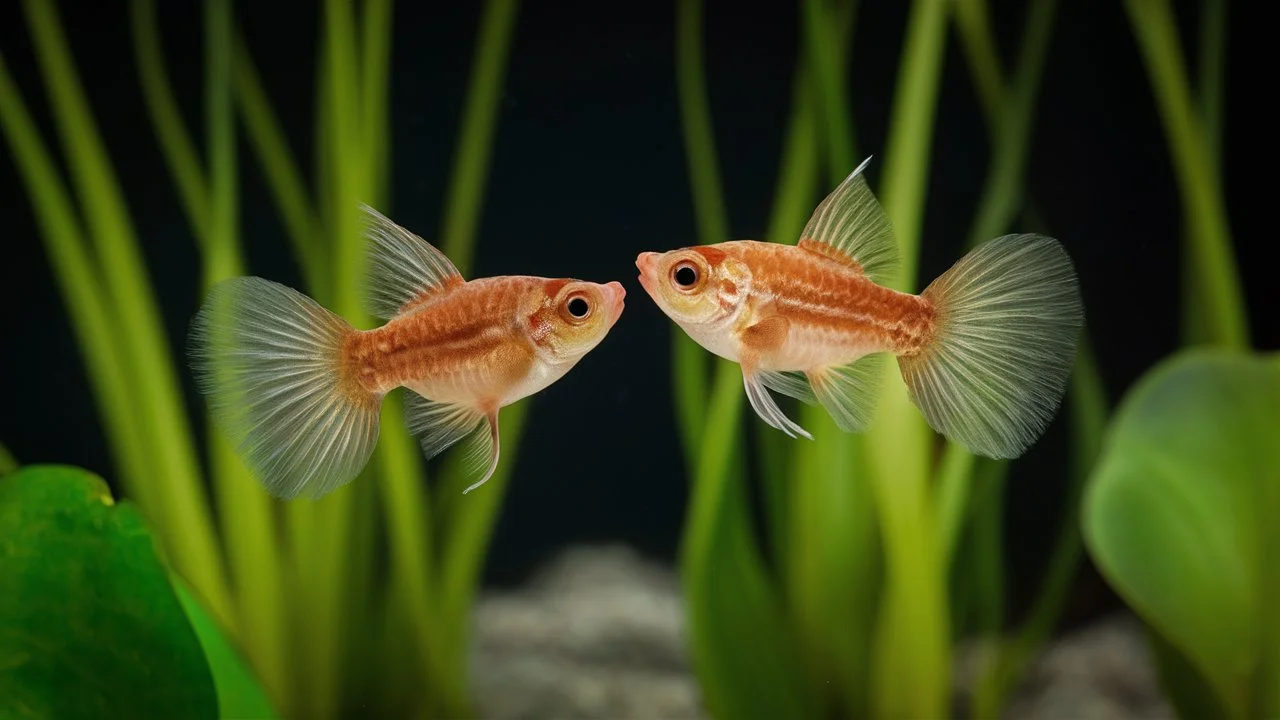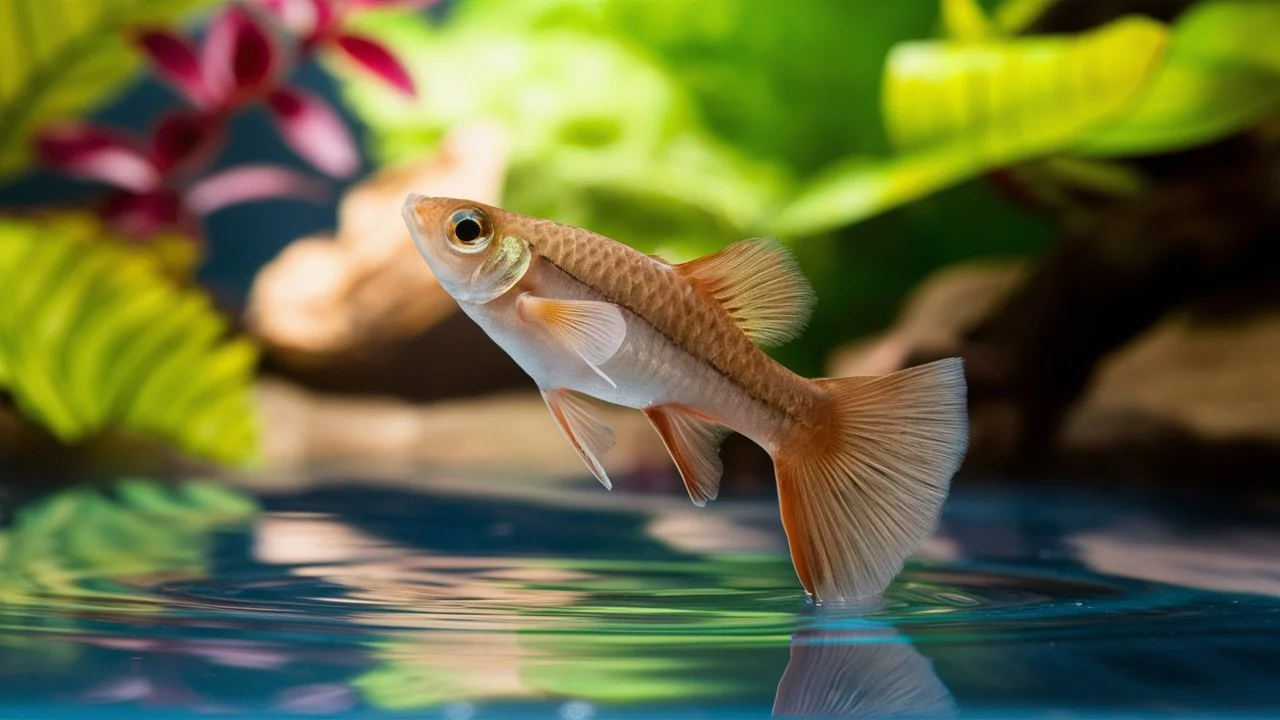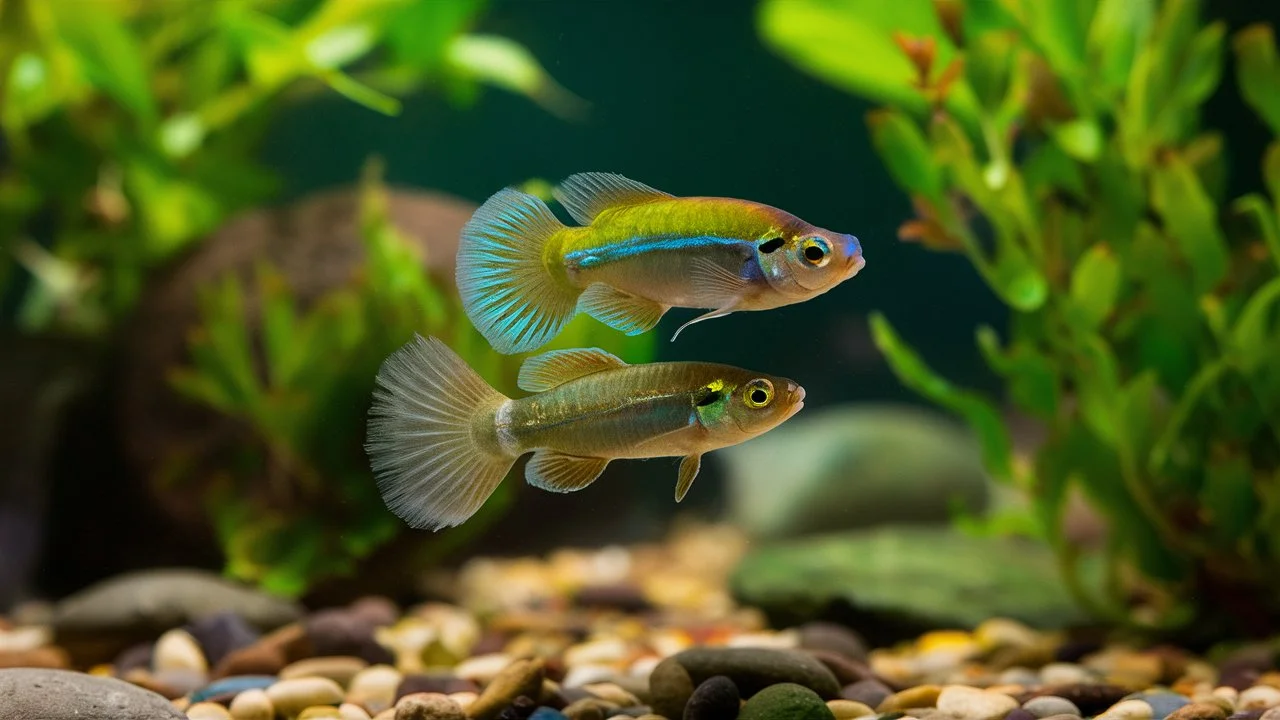Breeding guppies is a fun and exciting hobby. Guppies are colorful fish that are easy to take care of. If you want to breed guppies, you need to know a few important things. First, you have to set up a good tank environment for them. Then, you need to make sure you have both male and female guppies.
To breed guppies, set up a tank with clean water and a heater to keep it warm, between 72-82 degrees Fahrenheit. Add some plants for hiding. Pick healthy male and female guppies. The males are more colorful and have big tails. Feed them different kinds of food to keep them healthy. Female guppies have babies every 30 days. These babies swim right away. Put the babies in a separate part of the tank so they are safe from the adults. Feed them small food like crushed flakes. Keep the tank clean and watch your guppies grow.
How to Breed Guppies in a tank?
Breeding guppies can be an enjoyable and rewarding experience. Here’s how you can get started, broken down into simple steps.

Set Up Your Tank
- Tank Size: Get a tank that’s at least 10 gallons.
- Water Conditions: Fill the tank with clean water. Keep the water temperature between 72-82 degrees Fahrenheit using a heater.
- Environment: Add plants and rocks to create hiding spots for the guppies.
Choose Your Guppies
- Select Healthy Fish: Choose vibrant male guppies with big tails and plainer female guppies. Ensure they are active and healthy.
Feeding Your Guppies
- Diet: Feed your guppies a mix of dry flake food and live food like brine shrimp or bloodworms.
- Frequency: Feed them small amounts twice a day.
Breeding the Guppies
- Breeding Process: Female guppies give birth to live young every 30 days. They do not lay eggs.
Caring for Baby Guppies
- Separation: Move the baby guppies to a separate area immediately after birth to protect them from adult guppies.
- Feeding: Give the baby guppies crushed flake food or special fry food.
Keep the Tank Clean
- Regular Maintenance: Clean the tank regularly by changing some of the water each week to keep it fresh and healthy for the guppies.
By following these straightforward steps, you can successfully breed and raise guppies. Enjoy your guppy breeding adventure!
Related reading:Do guppies give birth at night?
How to breed guppy fish faster?
Breeding guppies faster involves optimizing their environment and care to encourage quicker reproduction cycles and healthier fry. Here are key strategies to help you breed guppies more quickly:

Optimize Tank Conditions
- Temperature: Maintain the water temperature between 78-82 degrees Fahrenheit. Higher temperatures can accelerate metabolism and shorten the gestation period.
- Water Quality: Keep the water clean and well-filtered. Perform regular water changes (20-30% per week) to reduce toxins and stress on the fish.
Enhance Diet
- Nutrition: Feed your guppies high-quality food such as live or frozen brine shrimp, bloodworms and high-protein flake foods. A nutritious diet enhances the health of the guppies and supports more frequent reproduction.
- Feeding Frequency: Feed the guppies small amounts multiple times a day to ensure they are well-nourished without overloading the tank with uneaten food.
Manage Breeding Stock
- Selective Breeding: Choose healthy and vibrant fish for breeding. Strong genetic traits can lead to more resilient and quicker-breeding offspring.
- Male to Female Ratio: Maintain a ratio of one male to two or three females. This prevents females from being over-stressed by male attention, allowing them to recover more quickly between births.
Use Breeding Boxes or Separate Tanks
- Separation: Using a breeding box or a separate tank for pregnant females can protect them from stress and allow you to control the breeding environment more closely.
- Monitoring: Close observation of pregnant guppies in these controlled environments can help you better manage stress and diet, ensuring optimal health.
Fry Care
- Immediate Separation: Remove fry from the main tank immediately after birth to prevent them from being eaten. This also allows the female to recover and prepare for the next pregnancy cycle sooner.
- Specialized Fry Diet: Feed fry high-quality, fine-grained food or infusoria, and gradually introduce baby brine shrimp. Good nutrition is crucial for fast growth.
Control Light
- Lighting: Provide up to 14 hours of light per day. Consistent light cycles can help regulate breeding cycles and encourage more frequent spawning.
By following these tips, you can potentially shorten the time between guppy pregnancies, leading to faster breeding cycles. Always monitor the health of your guppies to ensure that any changes in care or environment remain beneficial to their well-being.
How to Tell and What to Do if a Guppy is Pregnant?
Knowing if your guppy is pregnant and what to do next can help you take good care of her and the upcoming baby guppies. Here’s a simple guide to help you.

How to Tell if a Guppy is Pregnant?
- Look at Her Body: A pregnant guppy will have a bigger and rounder belly. As she gets closer to giving birth, her belly will look very swollen.
- Check the Gravid Spot: Near the tail, a pregnant guppy has a dark spot called the gravid spot. It gets darker and larger as the pregnancy progresses.
- Observe Her Behavior: A pregnant guppy might hide more or act differently. She might not eat as much or stay near the heater.
What to Do if Your Guppy is Pregnant?
- Prepare a Separate Tank: It’s a good idea to move your pregnant guppy to a separate tank. This keeps her calm and safe when she gives birth.
- Make the Tank Comfortable: Put clean water, a heater, and some plants in the separate tank. Make sure the water is the same temperature as in the main tank.
- Feed Her Well: Give your pregnant guppy high-quality food like brine shrimp or special guppy food. This helps her stay healthy and makes strong baby guppies.
- Watch for Birth: Keep an eye on her. When she starts giving birth, you’ll see tiny fish coming out. They will start swimming right away.
- Care for the Babies: After the babies are born, feed them tiny foods like baby brine shrimp or crushed flake food. Keep them in their own tank until they are big enough not to be eaten by other fish.
Taking care of a pregnant guppy is important. With the right setup and care, you can help her have healthy baby guppies.
Conclusion
Breeding guppies easily comes down to keeping their tank clean, feeding them well, and making sure there are more females than males. Set up a good tank, keep the water nice and clean, and give them the right food. With just a little care and watching, you can successfully breed guppies and enjoy seeing the baby fish grow. This simple method makes it fun and easy for anyone to start breeding guppies at home.

4 thoughts on “The Easiest And Simple Way to Breed Guppies”